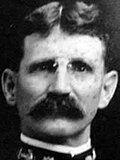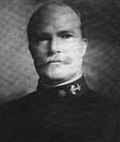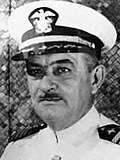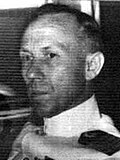| Term | Portrait | Incumbent | Notes |
|---|
| February 17, 1900 – November 27, 1901 |  | Benjamin Franklin Tilley , Commandant | April 17, 1900: Treaty of Cession of Tutuila |
| November 27, 1901 – December 16, 1902 |  | Uriel Sebree , Commandant | |
| December 16, 1902 – May 5, 1903 |  | Henry Minett , acting Commandant | |
| May 5, 1903 – January 30, 1905 |  | Edmund Beardsley Underwood , Commandant/Governor | July 16, 1904: Treaty of Cession of Manu'a |
| January 30, 1905 – May 21, 1908 |  | Charles Brainard Taylor Moore , Governor | |
| May 21, 1908 – November 10, 1910 |  | John Frederick Parker , Governor | |
| November 10, 1910 – March 14, 1913 |  | William Michael Crose , Governor | July 17, 1911: U.S. Naval Station Tutuila renamed American Samoa |
| March 14 – July 14, 1913 |  | Nathan Post , acting Governor | First term |
| July 14, 1913 – October 2, 1914 |  | Clark Daniel Stearns , Governor | |
| October 2, 1914 – December 6, 1914 |  | Nathan Post , acting Governor | Second term |
| December 6, 1914 – March 1, 1915 |  | Charles Armijo Woodruff , acting Governor | |
| March 1, 1915 – June 10, 1919 |  | John Martin Poyer , Governor | |
| June 10, 1919 – November 3, 1920 |  | Warren Terhune , Governor | Committed suicide |
| November 11, 1920 – March 1, 1922 |  | Waldo A. Evans , Governor | |
| March 1, 1922 – September 4, 1923 |  | Edwin Taylor Pollock , Governor | |
| September 4, 1923 – March 17, 1925 |  | Edward Stanley Kellogg , Governor | |
| March 17, 1925 – September 9, 1927 |  | Henry Francis Bryan , Governor | |
| September 9, 1927 – August 2, 1929 |  | Stephen Victor Graham , Governor | February 20, 1929: U.S. Congress recognized the cession of Tutuila and Manu'a by their chiefs, with retrospective to 16 July 1904. |
| August 2, 1929 – March 24, 1931 |  | Gatewood Lincoln , Governor | First term |
| March 24 – April 22, 1931 |  | James Sutherland Spore , acting Governor | |
| April 22 – July 17, 1931 |  | Arthur Emerson , acting Governor | |
| July 17, 1931 – May 12, 1932 |  | Gatewood Lincoln , Governor | Second term |
| May 12, 1932 – April 10, 1934 |  | George Landenberger , Governor | |
| April 10–17, 1934 |  | Thomas C. Latimore , acting Governor | |
| April 17, 1934 – January 15, 1936 |  | Otto Dowling , Governor | |
| January 15–20, 1936 |  | Thomas Benjamin Fitzpatrick , acting Governor | |
| January 20, 1936 – June 3, 1938 |  | MacGillivray Milne , Governor | |
| June 26, 1938 – July 30, 1940 |  | Edward Hanson , Governor | |
| July 30 – August 8, 1940 |  | Jesse Wallace , acting Governor | |
| August 8, 1940 – June 5, 1942 |  | Laurence Wild , Governor | Henry Louis Larsen served as Military Governor from January 17 to April 25, 1942 |
| June 5, 1942 – February 8, 1944 |  | John Gould Moyer , Governor | |
| February 8, 1944 – January 27, 1945 |  | Allen Hobbs , Governor | |
| January |  | Ralph Hungerford , Governor | |
| September 3–10, 1945 |  | Samuel Canan , acting Governor | |
| September 10, 1945 – April 22, 1947 |  | Harold Houser , Governor | |
| April 22, 1947 – June 15, 1949 |  | Vernon Huber , Governor | |
| July 7, 1949 – February 23, 1951 |  | Thomas Darden , Governor | |







































